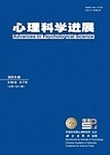Being able to analyze the influence mechanism of independent variables on dependent variables, the analysis of mediation effect has become an important statistical method in multivariate research. Since the first publication of Chinese paper on the mediation effect and its analytical methods in 2004, the mediation effect has become one focus of methodological research in Chinese Mainland, which is systematically reviewed in this paper.
Firstly, the simple mediation model is reviewed with concept identification: how to distinguish between mediation and suppression effects, partial and complete mediation effects, and mediation effect and moderation effect. Then, methodological research on mediation effects in China’s Mainland is divided into five aspects: testing method for mediation effects, mediation effect size measure, mediation effect involving categorical variables or longitudinal data, and extended mediation model. They are summarized as follows.
To test ab≠0,the easiest way is to test a≠0 and b≠0. These sequential tests are actually not the same as the joint significance tests because the Type-I error rates are rather different. If the test result is a≠0 and b≠0, then ab≠0 can be inferred with the Type-I error rate less than the significance level 0.05 (the preset significance level), while the Type-I error rate of the joint significance tests is 0.0975. However, if at least one of a≠0 and b≠0 does not hold, the sequential tests should not be used, since its statistical power is less than other alternative test methods discussed in the paper. Anyway, Bootstrap methods are preferred because they provide interval estimation of the mediation effect with a higher power. Furthermore, if appropriate prior information is available, the Bayesian method is also recommended.
It is believed that κ2, R2-type and so on are not suitable as mediation effect size measures because of no monotonicity. Although υ=(ab)2 is monotonic, it is not as simple and clear as the mediation effect (ab) itself. It is recommended that when the signs of ab and c are consistent, the standardized estimation of ab and ab/c should be reported.
Mediation analysis with multi-categorical independent variables and with a two-condition within-participant design are discussed when categorical variables are concerned in mediation effect models.
There are two types of model development in mediation analysis with longitudinal data. One is continuous time model and multilevel time-varying coefficient model that could be used to test time-varying effect of mediation effect. The other is random-effects cross-lagged panel model and multilevel autoregressive mediation model that could be adopted to examine individuals-varying effect of mediation effect. In addition, latent growth mediation model or multilevel mediation model in mediation effect analysis could be adopted only when the involved causal relationship is instant. Otherwise, cross-lagged panel model, continuous time model, or multilevel autoregressive mediation model should be adopted.
The extensions of the mediation model include multiple mediation model, multilevel mediation model, single-level and multilevel moderated mediation model as well as mediated moderation model. These extended models can be used for both the analysis of observed variables and latent variables.
Finally, the recent development of foreign methodological research on mediation effects is discussed, including potential outcome mediation analysis, confounder control in mediation analysis, robust mediation analysis, and power analysis of mediation effects. Moreover, integration of new statistical techniques has become a new feature of methodological research of mediation effects, for example, exploratory mediation analysis via regularization, bi-factor mediation analysis, latent class mediation analysis, and network mediation analysis.




